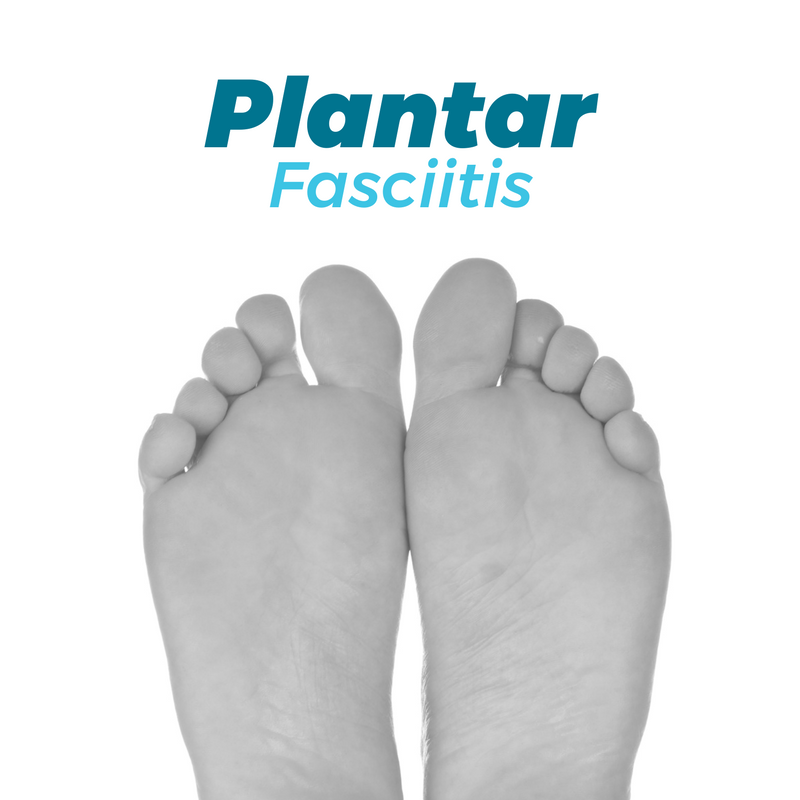Walking is a simple pleasure that many of us take for granted. Walking enables us to get around and live our lives. When our ability to walk is impaired, it makes life much more difficult. One condition in particular can make walking and running much more painful: plantar fasciitis. Plantar fasciitis is not a deadly condition, but it can greatly affect a patient’s quality of life.
Each year more than 2 million people receive some type of treatment for plantar fasciitis. While a majority of patients typically recover in a matter of weeks or months, there are patients who continue to suffer from the condition. Conventional medical treatments do not work for them and it can leave some patients crippled.
The medical community has been investigating alternative treatment methods, such as stem cell therapy. Stem cells have the potential to treat the root cause of the condition and improve a patient’s quality of life. A deeper understanding of the condition may help patients understand exactly how stem cells may potentially treat this condition, so let’s discuss the basics.
What Is Plantar Fasciitis?
Plantar fasciitis occurs when the plantar fascia is inflamed and causes dull and sharp pains in the feet of patients. The condition is also known as policeman’s foot, as police officers who patrolled on foot would develop the condition. Generally, patients experience the most pain in the morning when first walking as there is not much blood flowing to the affected area.
The medical definition for this condition suggests that the reason for the pain is due to inflammation of the plantar fascia. There are many reasons that the plantar fascia can become inflamed, from overexercising to old age. Some research suggests that the plantar fascia actually degrades in some patients, which causes the condition.
Women and men between the ages of 40 and 70 are at a higher risk of developing plantar fasciitis. Women are slightly more likely to develop the condition as compared to men. Patients with jobs where they are constantly on their feet, such as servers or construction workers, are more likely to develop the condition.
Additionally, patients who are overweight are much more likely to develop the condition. The added weight will increase the amount of force that the plantar fascia has to absorb. Losing weight can help relieve some of the symptoms of the condition. Pregnant women may develop plantar fasciitis during the later stages of their pregnancy.
But, why does inflammation or damage to the plantar fascia cause this condition? Let’s get a better understanding of how the plantar fascia works in the foot.
What Does The Plantar Fascia Do?
The plantar fascia is a thick piece of connective tissue that supports the arch of the foot. The tissue is made from collagen fibers. There are three parts of the plantar fascia: the medial
component, the central component, and the lateral component. The central component is by far the largest piece of the plantar fascia.
One model suggests that the plantar fascia absorbs about 14% of the total load the foot holds. The plantar fascia is vital for the mechanical function and structural integrity of the foot. When the plantar fascia begins to break down, the rest of the foot will experience pain as the tissue is not absorbing as much force. The foot cannot handle the additional load that the plantar fascia carried.
The plantar fascia also plays an important role in gait, or how long our stride is when walking. The plantar fascia acts as a spring when the foot becomes outstretched when a patient is walking. If that spring is not functioning properly or damaged, then patients will have a much shorter stride when walking. Gait is an important indicator of overall health and can help patients stay in shape.
The plantar fascia is connected directly to the achilles heel in childhood. As a patient ages, this connection becomes less stable and there may be little to no connection by the time a patient reaches their 70s. This lack of connection can also contribute to plantar fasciitis.
Current Treatments For Plantar Fasciitis
The medical community has a few treatment options for patients with plantar fasciitis. Most of these treatment methods are focused on managing the condition.
Physical Therapy
As with many other musculoskeletal disorders, medical doctors will typically recommend physical therapy for patients suffering from this condition. Strengthening the lower parts of the leg can help take some of the force off of the plantar fascia. The strengthened muscles can absorb part of the force that would typically be absorbed by the plantar fascia.
Medication
Anti-inflammatory drugs are also typically recommended to patients with this condition. The medication can potentially reduce the associated pain and inflammation that is felt by patients. For patients that only have short-term plantar fasciitis, this treatment method typically suffices. If anti-inflammatory drugs do not reduce the patient’s pain level, then corticosteroids can also be used. Corticosteroids use can be effective, but the long-term negative consequences of steroid use usually outweigh the benefits. Corticosteroids can break down the tissue with long term use.
Extracorporeal Shock Wave Therapy
Extracorporeal shock wave therapy is a relatively new treatment method for this condition. A patient’s heel would be bombarded with sound waves. This may help to encourage the body to repair the plantar fascia. This therapy is noninvasive and easy, which could make it an attractive option for patients. There is some research that showcased that this type of therapy may actually lead to worse symptoms.
Surgery
In extreme cases of plantar fasciitis, where patients are experiencing pain for multiple months, a doctor may recommend surgery to relieve symptoms. About 5% of patients with plantar fasciitis will eventually need to undergo surgery. There are a few surgical methods that can be used that largely depend on the patient’s condition and a number of other factors.
One surgical method removes the plantar fascia from the heel bone, but this can lead to full loss of function in the foot. Gastrocnemius recession is another surgical option where the calf muscle is lengthened in order to improve the flexibility of the ankle. This can lead to less stress on the plantar fascia. Surgery can lead to a number of side effects, such as chronic pain and nerve damage, so it should be considered a last resort.
Time Off
For some patients all they need is some time off of their feet. Runners in particular are encouraged to stop running for a few weeks or even months to reduce the strain on their plantar fascia. The body will then have a chance to heal and repair the damage and inflammation in the plantar fascia. This does not work for all patients. Many patients will still experience intense pain even after taking time off.
Whatever treatment method patients utilize, there are no effective treatment options that are guaranteed to work for patients with plantar fasciitis. Many patients look for alternative therapies, but they may be unfamiliar with them. The research community is actively looking into stem cell therapy as a potential treatment option for plantar fasciitis.
Stem Cell Therapy For Plantar Fasciitis
Stem cell therapy has been dismissed by the medical community for decades. That has all changed in the past decade or so as research has shown that stem cells have the ability to treat conditions and diseases that currently have no effective therapies. Patients that are frustrated with conventional medical treatments are looking to utilize stem cell therapy in order to treat plantar fasciitis.
Stem cells have the ability to reduce inflammation. Countless studies have showcased that stem cells release antiinflammatory factors that decrease inflammation in the target area. Stem cells reduce the immune system’s response, which may be the reason that the tissue in the plantar fasciitis is inflamed.
Stem cells have regenerative properties as they release a number of powerful chemicals that encourage the body to repair and replace damaged cells and tissues. Patients with plantar fasciitis may be able to partially regenerate some of the damaged tissue in the plantar fascia. The newly regenerated plantar fascia will be able to help the rest of the foot absorb the force and patients may be able to walk or run without pain.
Stem cell therapy has also been shown to be completely safe in multiple studies. Patients will have little to no side effects when they choose stem cell therapy. All of these factors make stem cell therapy an attractive choice for patients who have had no success with conventional treatment options.
Platelet-rich plasma may also be a potential regenerative medicine treatment option for patients with plantar fasciitis. The concentrated plasma has a number of healing factors that may be able to reduce some of the symptoms of plantar fasciitis. Utilizing both stem cell therapy and platelet-rich plasma could be a powerful series of therapies that could reduce plantar fasciitis symptoms.
While the research for stem cell therapy for plantar fasciitis is still relatively scarce, there are some promising individual case studies. BioXcellerator works with patients with different conditions, including plantar fasciitis.
BioXcellerator Has Treated Patients With Plantar Fasciitis
At the BioXcellerator stem cell clinic in Medellin, Colombia our team has treated patients with plantar fasciitis. The FDA unfortunately does not allow some of the innovative treatments that we use at our facility, which is why we strategically opened our facility in Colombia. We can offer patients the most innovative stem cell treatments at this location.
Andrew Dynda went to the BioXcellerator clinic to receive treatment for his shoulder that recently underwent surgery. He was tired of hearing that his only treatment option involved surgery. In addition to receiving therapy on his shoulder, Andrew decided to treat his plantar fasciitis, which had been bothering him for three years. Andrew did not want to pursue more surgery for his condition.
Andrew received stem cell therapy for both his shoulder and plantar fasciitis. After receiving his treatment, Andrew showed promising recovery just days into his regenerative medicine journey. He is optimistic that he will continue to improve and that he will continue to have reduced symptoms in the coming years.
The BioXcellerator team was able to come up with a customized stem cell treatment plan that worked for his specific case. Our medical team always recommends therapies that should work for a patient. If a patient will not recover by utilizing stem cell therapy, then the medical team is more than happy to recommend the correct therapy. One way that we are working on creating the best possible medical care for our patients is through the use of a new stem cell treatment we call ‘golden cells.’
Golden Cells
One issue of trust that the general public has to deal with is the level of consistency and quality when it comes to stem cell therapy. Unfortunately, there are some bad actors in the regenerative medicine field that will gladly take a desperate patient’s money and administer a subpar treatment. The BioXcellerator team looked to quiet patient fears by creating an innovative process that ensures high stem cell quality.
This process works by testing stem cells for any potential diseases or poor morphology. We also have a strict set of conditions and guidelines for our stem cells. Stem cells that do not meet this criteria will be rejected. By using this process, we filter out the least potent stem cells and we are left with the highest quality stem cells that we like to call ‘golden cells.’ Our team believes that golden cells will improve our ability to treat patients by giving them the most potent stem cells. These stem cell treatments may have the potential to heal patients with plantar fasciitis.
If you are experiencing intense pain from plantar fasciitis and conventional medical options have not worked, discuss alternative treatment options with your doctor. You may be able to find a treatment option that works for your specific case. Stem cell therapy could potentially relieve some of your symptoms by repairing the plantar fascia and/or reducing the inflammation level.


